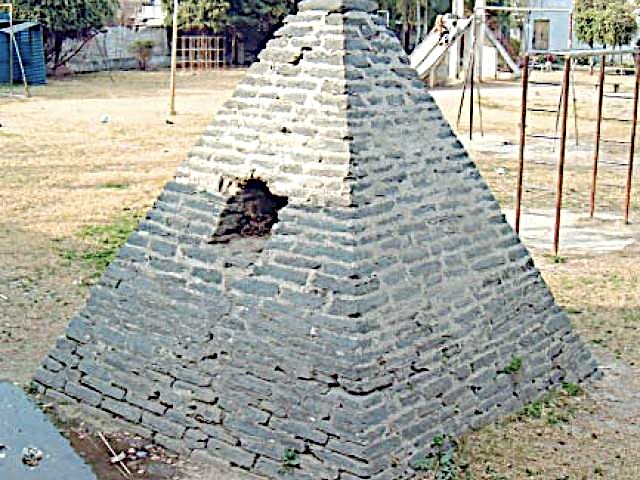CANORA (KANAKA), FRANCIS JOHN (1799-1848), an Irishman, inscribed in Khalsa Darbar records variously as Kenny, Kennedy and Khora. Roaming across many countries, he reached Lahore in 1831, and joined Maharaja Ranjit Singh`s artillery on a daily wage of Rs 3. Gradually, he rose to the rank of colonel, with a salary of Rs 350 per month. He continued to serve in the Sikh army after the first Anglo Sikh war (1845-46). But his loyalty to the Lahore Darbar was suspect.
In 1848, he was commanding an artillery battery at Hazara and was under the overall command of Chatar Singh Atarivala, the governor of Hazara province. Chatar Singh had raised the banner of revolt against the British on account of the extraordinary behaviour of Captain James Abbott, assistant to the British resident at Lahore, who had defied the governor`s authority by raising Muslim levies to destroy the Sikh brigade stationed in the Fort.
When James Abbott, accompanied by Muslim mercenaries, marched on Haripur Hazara with a view to expelling the governor, Chatar Singh ordered Canora to move the cannon out of the Fort on the open ground outside. Canora, who was in secret communication with James Abbott, refused to do so. The Sardar charged two companies of infantry to arrest Canora for insubordination. Canora refused to surrender and was consequently shot down under the orders of Chatar Singh. Gulcharan Singh, Ranjit Singh and His Generals. Jalandhar, n.d.
References :
1. Grey, C., European Adventurers of Northern India, 1785-1849 [Reprint]. Patiala, 1970
2. Grey, C., European Adventurers of Northern India, 1785-1849 [Reprint]. Patiala, 1970
Additional Information:
Pyramid-like Obelisk Grave of Colonel John Francis Canora of the Sikh Artillery died 1848 in Haripur.
Colonel Canora was a soldier of fortune in Ranjeet Singh’s Sikh Empire like Avitabile, Allard, Ventura, Court and many other foreign officers. Recorded in Khalsa Darbar records varyingly as ‘Kenny’, ‘Kanara’ and ‘Khora’, Sir James Abbott described him as an American, the Gazetteer of Hazara mistakenly recorded him as French, and others have suggested he was of Irish descent. Regardless of his origin, Canora served as an artillery officer under Raja Chattar Singh, the Sikh governor of Hazara, during the turbulent Second Anglo-Sikh War (1848). Canora refused orders from Chattar Singh’s soldiers to surrender his guns. Defiantly, he threatened to blow up the Sikh army with his artillery. As a result, he was shot dead by one of the Sikh soldiers. His grave, located in Zafar Park (Ladies Garden) in Haripur, was likely built a year later under the direction of James Abbott who honoured him.
An inscription on a now-missing square headstone once read:
“Canora, who fell nobly in the performance of his duty. Being summoned by the rebel Seikh Army to surrender his guns and being basely deserted by his men, he seized the linstock and fell singly combating a host, July 6, 1848.”
Serving under Raja Chattar Singh, the Sikh governor of Hazara, Canora was stationed at Haripur. By this time, the once-mighty Sikh Empire had significantly weakened. These losses had enabled the British to impose their own officers, like James Abbott, in key areas, including Hazara.
In 1848, as tensions mounted, Chattar Singh’s son, Sher Singh, prepared to move the Sikh army from Hazara to Multan to assist in a rebellion led by Moolraj, the ruler of Multan, against the British. However, James Abbott, acting in the British interest, attempted to obstruct these movements with the help of local Muslim levies. When Chattar Singh learned of Abbott’s plans, he gathered his forces at Haripur and ordered Canora to mobilise his artillery. Canora, however, disobeyed these orders and remained defiant. When the Sikh men came to take charge of things, he pointed his gun threatening to fire upon them.
Some of Chattar Singh’s soldiers, angered by Canora’s insubordination, shot him dead on July 6, 1848. His heroic yet tragic attempt to defend his position single-handedly, despite being deserted by his men, became the stuff of legend.
The monument is a square shaped pyramidal structure, built from locally sourced stone blocks, this cairn tapers upwards in the style of a traditional obelisk. Originally standing 3-4 meters high, the monument has been partially buried due to the gradual rise in the surrounding ground level, reducing its visible height to two meters.






